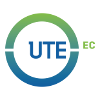Influence of the seaweed Ascophyllum nodosum as a growth promoter in the stage of rainbow trout (Oncorhynchus mykiss)
DOI:
https://doi.org/10.29019/enfoqueute.v8n5.178Keywords:
fingerlings, seaweed, growth, fungus, supplementAbstract
The quality of the algae Ascphyllum nodosum was assessed as a growth promoter in the breeding stage of Rainbow Trout (Oncorhynchus mykiss) and its immunostimulant effect with regard to fungal diseases as the Saprolegnia sp. 6000 fingerlings of 77 days of age were used, with an average weight of 0.15 g, distributed under a DCA. For the analysis of the results, it was applied the analysis of variance and separation of averages (Duncan to p<0.05), orthogonal comparisons and chi square. The seaweed Ascophyllum nodosum added as nutritional supplement in the growth stage with a level of 2% and 98% of concentrated food was the one that reached the best zoo technical and economic results: initial weight 0.84 g, daily weight gain 0.30 g, final weight 34.60 g., nutritive conversion 0.19, mortality 4.60%, and the cost of production per kilo of meat is $35.24. Regarding the mycotic challenge (fungus Saprolegnia sp.), the administration of the seaweed Ascophyllum nodosum on the percentages of 2%, 2.5% and 3% as nutritional supplement, provided resistance to the fingerlings.
Downloads
References
CENTRO EGIPCIO INTERNACIONAL PARA LA AGRICULTURA, (1994). Curso sobre el desarrollo de la Piscicultura. Cairo, CEIA. pp. 15
Conroy, D (1991). Principales enfermedades de los salmónidos; una guía de diagnóstico y control para el biólogo. 3ª. ed. Zaragoza, Acribia. pp. 120
Di Rienzo J, Balzarini M, Casanoves F, González L, Tablada M, Guzmán W. y Robledo CR. 2016. InfoStat. Software estadístico. Universidad Nacional de Córdoba. Argentina.
FAO, (2017). Papel de la FAO en la acuicultura. Recuperado el 01 de diciembre del 2017, de http://www.fao.org/aquaculture/es/
Imaki, A (1987). Introducción a la Crianza de Trucha Arco Iris. La Paz, Agencia de Cooperación Internacional del Japón (JICA) pp. 41-42-43-44
Niwa, Y. y Zeballo, A (1990). Guía de enfermedades de la trucha Arco Iris. La Paz, Agencia de Cooperación Internacional del Japón (JICA). pp. 32-33-34.
Nilubol, K. y Yuasa, K, (1998). Mycoscience: Morphological aspects of Saprolegnia sp., isolated from pejerrey. Tokyo (Japón). pp. 365-366-367.
Summer Zone, (2017). Programas de orgánicos Ecuador Summer Zone. Extraído el 1 de mayo del 2017. Disponible en http://www.organicosecuador.com/nosotros
Published
How to Cite
Issue
Section
License
The articles and research published by the UTE University are carried out under the Open Access regime in electronic format. This means that all content is freely available without charge to the user or his/her institution. Users are allowed to read, download, copy, distribute, print, search, or link to the full texts of the articles, or use them for any other lawful purpose, without asking prior permission from the publisher or the author. This is in accordance with the BOAI definition of open access. By submitting an article to any of the scientific journals of the UTE University, the author or authors accept these conditions.
The UTE applies the Creative Commons Attribution (CC-BY) license to articles in its scientific journals. Under this open access license, as an author you agree that anyone may reuse your article in whole or in part for any purpose, free of charge, including commercial purposes. Anyone can copy, distribute or reuse the content as long as the author and original source are correctly cited. This facilitates freedom of reuse and also ensures that content can be extracted without barriers for research needs.
This work is licensed under a Creative Commons Attribution 3.0 International (CC BY 3.0).
The Enfoque UTE journal guarantees and declares that authors always retain all copyrights and full publishing rights without restrictions [© The Author(s)]. Acknowledgment (BY): Any exploitation of the work is allowed, including a commercial purpose, as well as the creation of derivative works, the distribution of which is also allowed without any restriction.























 Enfoque UTE - Facultad de Ciencias de la Ingeniería e Industrias - Universidad UTE
Enfoque UTE - Facultad de Ciencias de la Ingeniería e Industrias - Universidad UTE